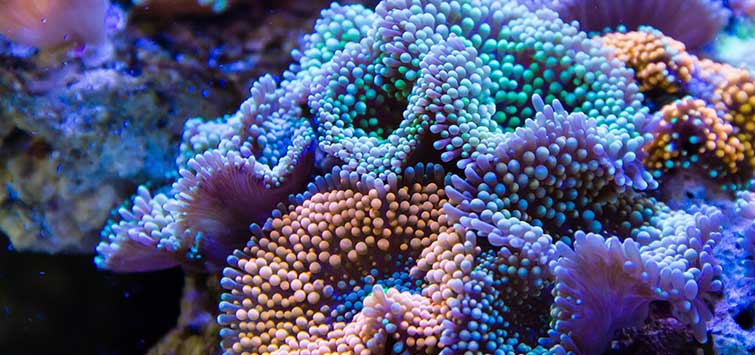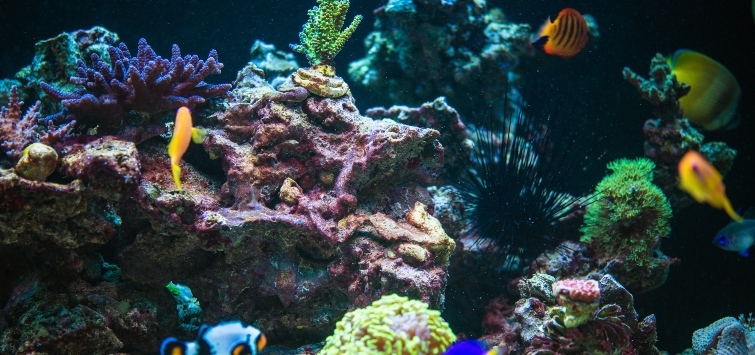Ricordea florida
Author: Bob Goemans
Common Names: Mushroom coral, Florida false coral, anemone corals, mushroom anemones, ricordea
Phylum: Cnidaria (soft corals)
Class: Anthozoa
Order: Corallimorpharia
Family: Ricordeidae
Range: Tropical Western Atlantic Ocean: Southern Florida to Brazil, Gulf of Mexico, and the Carribbean
Natural Environment: This soft coral is usually found encrusting substrates of various kinds (rocky areas and dead coral rubble) in shallow coastal environments where currents are fairly swift.
Captive Care
These mostly photosynthetic corals, which are approximately 2 to 3 inches (5 to 7.5 cm) in diameter, are among the easiest of all corals to maintain because they do better in somewhat nutrient-rich surroundings. They are not true anemones, nor are they true corals, but rather, they are somewhere in between. More simply put, they are a morph.
Ricordea species, of which there are only two--R. florida and R. yuma, hailing from the Tropical Indo-Pacific--have a surface area that is usually covered with short, bubble-like tentacles. They are fairly shallow water dwellers and need strong light and swift water movement, which are requirements opposite those of other members in the coral Corallimorpharia. However, R. yuma, which is not as colorful as R. florida, comes from slightly deeper waters.
Keep in mind that, even though the majority of its nutrition mainly comes from its ability to photosynthesize, this animal has short tentacles and is also a suspension feeder. And as with any animal with tentacles, they can be fed. Those in my aquariums have responded nicely to zooplankton-like foods and baby brine shrimp. Be aware they can damage other corals if they touch them, and so sufficient space must be allowed between R. florida and other corals. They are generally hardy, disease resistant, and fairly fast growing if provided the necessary foodstuffs, proper water movement, and light intensity.
Note:
The taxonomy information that has existed in this order of organisms for a long time has been confusing to say the least. Nevertheless, recent (2003) revisions by noted British marine biologist and diver Vincent B. Hargreaves PhD (Doctorate in Marine Biology with a double major in Ichthyology and Marine Invertebrate Zoology) have resulted in a new arrangement of many of the species known or thought to be in this order. It is now said to encompass three families (Corallimorphidae, Discocomatidae, and Ricordeidae) contianing nine genera with 59 species. For the latest update, visit saltcorner.com, open the Animal Library, and visit the Invertebrate section.
Water Requirements: Calcium 380 to 430 ppm, alkalinity 3.5 meq/l, pH 8.1 to 8.2, specific gravity 1.025, and a temperature range of 72 to 83 degrees Fahrenheit (22 to 28 degrees Celsius). Iodine additives, used as their manufacturers recommend, also seem to have a positive

.png?h=595&iar=0&w=2781&hash=5FD5E69473BCC22199FBFA2FB71B6033)



